May 2020
By Maryann Cusimano Love
Pope Francis and the Catholic Church have doubled down on their opposition to nuclear weapons. Pope Francis decried the use and possession of nuclear weapons in trips to Nagasaki and Hiroshima in 2019, bringing attention to dangerous failures in nuclear disarmament and arms control prior to this year’s now-postponed nuclear Nonproliferation Treaty (NPT) review conference and the 75th anniversary of the atomic bombings of Hiroshima and Nagasaki.
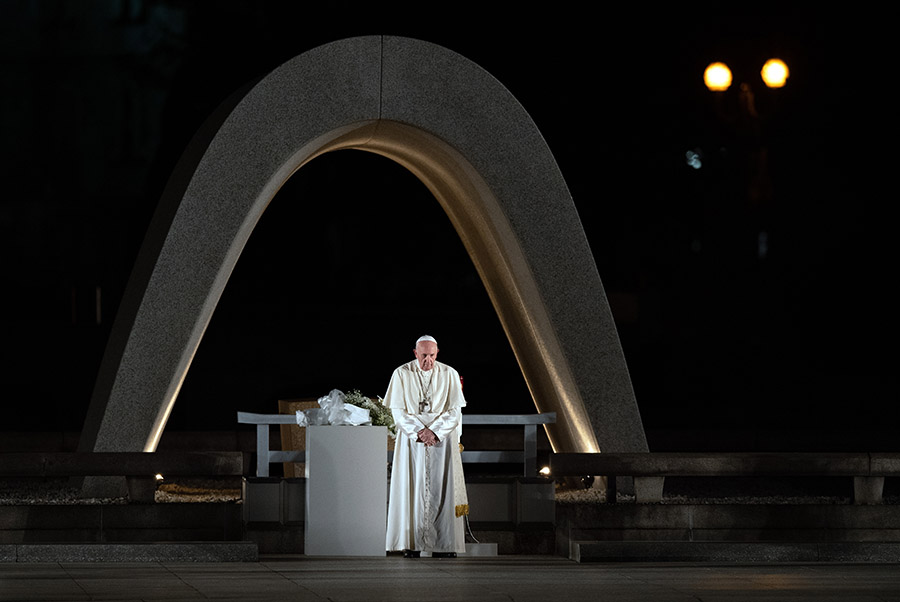 Religious actors bring three “I’s” to international affairs: institutions, ideas, and imagination.1 The Catholic Church uses its three I’s on nuclear disarmament issues as part of its “Resurrection Politics,” an effort to revive issues once considered moribund, and restore them to the international agenda. The church is working to change nuclear weapons policy and the normative framework by which nuclear weapons are judged, to strengthen the nuclear taboo at a time when it is undermined. As the world gets younger, more than half of the world’s people were born after the end of the Cold War. Pope Francis works to raise the voices of the hibakusha, Japan’s atomic bomb survivors, to teach about nuclear weapons to younger generations.
Religious actors bring three “I’s” to international affairs: institutions, ideas, and imagination.1 The Catholic Church uses its three I’s on nuclear disarmament issues as part of its “Resurrection Politics,” an effort to revive issues once considered moribund, and restore them to the international agenda. The church is working to change nuclear weapons policy and the normative framework by which nuclear weapons are judged, to strengthen the nuclear taboo at a time when it is undermined. As the world gets younger, more than half of the world’s people were born after the end of the Cold War. Pope Francis works to raise the voices of the hibakusha, Japan’s atomic bomb survivors, to teach about nuclear weapons to younger generations.
The Immorality of Nuclear Weapons
Seventy-five years after the end of World War II, nuclear weapons continue to feature prominently in national foreign policies. The United States and Russia are building new nuclear warheads and delivery vehicles, and North Korea and the United States threaten nuclear attacks.
Speaking in Hiroshima in November 2019, the pope said future generations will condemn our actions.
The use of atomic energy for purposes of war is immoral, just as the possessing of nuclear weapons is immoral, as I already said two years ago. We will be judged on this. Future generations will rise to condemn our failure if we spoke of peace but did not act to bring it about among the peoples of the earth. How can we speak of peace even as we build terrifying new weapons of war? How can we speak about peace even as we justify illegitimate actions by speeches filled with discrimination and hate?2
At a time when the United States is withdrawing from arms control agreements, including the Intermediate-Range Nuclear Forces Treaty and the 2015 Iran nuclear deal, the pope has renewed attention and efforts to reduce nuclear dangers through the rule of law, dialogue, treaties and international institutions. “We must never grow weary of working to support the principal international legal instruments of nuclear disarmament and nonproliferation, including the Treaty on the Prohibition of Nuclear Weapons [TPNW],” he said in Nagasaki during his November 2019 trip to Japan.3
Pope Francis called for placing the church’s opposition to nuclear weapons into the catechism, a teaching document of the church. “The use of nuclear weapons is immoral, which is why it must be added to the catechism of the Catholic Church. Not only their use, but also possessing them: because an accident or the madness of some government leader, one person’s madness can destroy humanity.”4
In Hiroshima and Nagasaki, the pope reaffirmed the church’s long-standing position calling for deeper disarmament, nonproliferation, and a ban against nuclear weapons. He echoed his remarks to the United Nations in 2015: “An ethics and a law based on the threat of mutual destruction and possibly the destruction of all mankind are self-contradictory and an affront to the entire framework of the United Nations. There is urgent need to work for a world free of nuclear weapons, in full application of the [NPT], in letter and spirit, with the goal of a complete prohibition of these weapons.”5
The church’s concern with these issues is not new. Pope John XXIII helped to deescalate the Cuban missile crisis. Shortly afterward, he urged in “Pacem in Terris” in 1963 that “[n]uclear weapons must be banned. A general agreement must be reached on a suitable disarmament program, with an effective system of mutual control.”6 The Limited Test Ban Treaty was concluded four months later.
The current church position is a return to the traditional Catholic position since the advent of the atomic age, favoring nuclear disarmament. Some have misrepresented Pope John Paul II as an ardent supporter of nuclear deterrence, but they are mistaken. In his 1982 speech to the United Nations, he urges deep support for disarmament 21 times. He only mentions deterrence twice, once negatively as the “balance of terror” and once dismissing deterrence as immoral as a permanent position, “certainly not as an end in itself.” Pope Francis is more plain spoken in his “certainly not.” Pope Francis and Pope John Paul II are in complete agreement that a negative peace is not sustainable, while a positive peace is possible. “Peace is our duty: our grave duty, our supreme responsibility,” Pope John Paul II said in 1982.7
Deeper disarmament requires building deeper relationships and dialogue, and the church understands this will take time. As Archbishop Tomasi, Secretary of the Holy See’s Dicastery on Integral Human Development, said recently at Catholic University, “There is no illusion that the number of weapons will disappear as if by magic or after moral and legal condemnation. Therefore, the Holy See is equally engaged in a step-by-step dialogue with nuclear-armed states whose commitment remains crucial to the achievement of any serious and realistic discussion of nuclear arms control.”8
The Church as Bridge Builder
How do religious actors affect international politics and nuclear disarmament? They bring the three I’s to global issues. Governments and scholars are most likely to address the first I, the vast networks of institutions that religious actors bring to bear on international politics. As the world’s largest and most geographically dispersed religion, Catholics have faith-based institutions around the world, including universities, parishes, schools, religious orders, learned societies, charities, hospitals, and Catholic peace organizations, such as the Catholic Peacebuilding Network. In addition to this vast array of civil society institutions, the Catholic Church has a state-based institutional lane, the world’s oldest diplomatic corps (pre-dating the existence of the sovereign state), and diplomatic relations with 183 states, as well as a diplomatic presence at intergovernmental organizations such as the United Nations. Mobilizing and coordinating these transnational networks is not easy or automatic. These institutions are not fixed. They move and change, but can mobilize creatively to build peace.
Many religious actors have worked tirelessly to rid the world of nuclear dangers and build peace, from the Friends Committee on National Legislation (Quakers) to the Soka Gakkai (Buddhist) organization. Yet, religious demographics mean that the Catholic Church is the only religious actor to have some presence in all nine nuclear-armed states, as well as the non-nuclear-weapon states, and it has extensive civil society and governmental-level networks. The Catholic Church has the population size of China but dispersed, with communities in every part of the world. When effectively coordinated with the Holy See’s international diplomatic presence and civil society groups, this institutional structure can bring a “pincer movement” of persuasion and pressure, externally and internally.9
The word “pope” or “pontiff” means bridge builder. At a time of increasing political polarization, domestically and internationally, the Catholic Church has much-needed institutional capacities that can be used to build bridges among nuclear-weapon and non-nuclear-weapon states, civil society and governments, science and religion, conservatives and progressives, and older and younger generations. For example, Rose Gottemoeller, former deputy secretary general of NATO, and others praised the Catholic Church’s advocacy, particularly in reaching critical Republican swing senators, to ratify the New Strategic Arms Reduction Treaty (New START) in December 2010. Today, Catholics are engaged with Russia in Track 2 diplomacy on an extension of New START. The Holy See has facilitated sensitive diplomatic negotiations in the past, including between the United States and Cuba, and helped to securing the release of Americans held in Iran. The church has the capacity to facilitate dialogue between U.S. President Donald Trump and Russian President Vladimir Putin for a New START extension or to facilitate a return to nuclear dialogue between the United States and Iran or North Korea.
Yet, often the most powerful contributions religious actors bring to peacebuilding are the other two I’s, ideas and imagination. Ideas are the religious norms applied to global issues, and popes have directed such efforts. For example, Pope John XXIII’s prepared the encyclical “Peace on Earth,” which guided the modern Catholic Church’s work on peace and justice, and Pope Francis circulated the encyclical “Laudato Si: On Care for Our Common Home (2015),” stressing a positive peace among peoples, God, and the planet and future generations, integral human development.
The final I (imagination) is what U.S. President George H.W. Bush once referenced as “the vision thing.” The power of religious inspiration envisions and creates a more positive peace. Religious imagination is accessible to all, not just scholars and scribes.
 Catholic ideas and imagination have always rested on the concept of a positive, just peace based on right relationships rather than a negative peace based on violence and threat of violence. The tradition of a just war tells us that positive peace is the goal and tells us how to limit war, protecting civilians and the environment from indiscriminate and disproportionate attacks. The tradition of a just peace builds on that, offering moral and practical guidance on how to build a positive peace by expanding participation, strengthening right relationships, restoring persons and economies to build social cohesion, expanding reconciliation through truth telling and acknowledgement about the conflict, and other means to heal the wounds of war, in order to create a peace that is sustainable over time and the planet. Catholic theology and practice on a just peace has been expanding in recent decades, drawing from peacebuilding work of Jesus and building on the lessons the church has learned in peacebuilding around the world, from Northern Ireland to the Philippines. The church’s work on nuclear disarmament is animated by this vocation to build a more just and sustainable peace.
Catholic ideas and imagination have always rested on the concept of a positive, just peace based on right relationships rather than a negative peace based on violence and threat of violence. The tradition of a just war tells us that positive peace is the goal and tells us how to limit war, protecting civilians and the environment from indiscriminate and disproportionate attacks. The tradition of a just peace builds on that, offering moral and practical guidance on how to build a positive peace by expanding participation, strengthening right relationships, restoring persons and economies to build social cohesion, expanding reconciliation through truth telling and acknowledgement about the conflict, and other means to heal the wounds of war, in order to create a peace that is sustainable over time and the planet. Catholic theology and practice on a just peace has been expanding in recent decades, drawing from peacebuilding work of Jesus and building on the lessons the church has learned in peacebuilding around the world, from Northern Ireland to the Philippines. The church’s work on nuclear disarmament is animated by this vocation to build a more just and sustainable peace.
Together, these three I’s are worth more than the sum of their parts, combined in transnational networks for nuclear disarmament. These networks can work at the individual and community levels and at the elite level to persuade policymakers. As the nuclear taboo erodes, this breadth is important, reaching into the military.10
For example, Catholic countries have long led the campaign for nuclear disarmament and nonproliferation. The first nuclear-weapon-free zone, the 1967 Treaty of Tlatelolco, was created by Catholic-majority countries in Latin America. Catholic countries then led the creation of the NPT, using the language of their first nuclear-weapon-free zone as the core language of the NPT.
That work continues. The Holy See has played a helpful role in creating the TPNW, supporting the humanitarian impact conferences in Mexico and Austria (two Catholic-majority countries). The Holy See was the first to sign and ratify the treaty. Pope Francis’ urgent statements about the immorality of nuclear weapons, as well as the influence of the Catholic Church in supporting the TPNW, will likely help the TPNW reach the 50 states-parties needed for its entry into force. A majority of the 35 countries that already have ratified the treaty are Catholic-majority countries. Another 12 of the countries who have signed the treaty but not yet ratified are Catholic-majority countries, such as Ireland, and four more countries have Catholic pluralities, such as Guatemala. It is quite possible that Catholic activism on nuclear weapons may help to bring the TPNW into force.
Resurrection Politics
The church’s work on the TPNW is the latest example of resurrection politics, taking issues thought previously “dead on arrival” and restoring them to the international agenda. Resurrection politics succeeded in the International Campaign to Ban Landmines (ICBL), the International Campaign to Ban Cluster Munitions, the Jubilee movement for international debt relief to poor countries, and international efforts against human trafficking.
At first glance, bans from anti-personnel landmines to nuclear weapons may seem to have little in common. Landmines are cheap and readily available and were a weapon in wide use at the time they were banned. In contrast, only nine countries have expensive nuclear weapons. Although nuclear weapons have been detonated more than 2,000 times, only twice were they used in war. Yet in both cases, decades of advocacy on the issue in traditional forums had stalled, and advocates grew impatient with the stonewalling. Progress on the issue was blocked often by a handful of powerful countries, including the United States, who were part of the problem and did not want to fix it. The issues were framed in narrow technical terms, without much wider public engagement or understanding of the human costs. Advocacy on the issues was deemed a hopeless cause, a dead end.
Resurrection politics, moving a dead issue to life, follows a deliberate pattern. A diverse coalition of civil society actors and like-minded countries comes together. The coalition includes doctors, scientists, scholars, health care providers, the Catholic Church and other religious actors, nongovernmental organizations (NGOs) concerned with victims, and often retired military and government officials. The coalition shines a light on the human face of the issue, particularly the humanitarian impact on society’s most vulnerable: women and children. The groups reframe the issue, using powerful pictures and stories of victims, shaming and naming perpetrators. As the victims tell their stories of the human impact, doctors, scientists, scholars, health care providers, and retired military and government officials validate the narrative with facts, figures, and scholarly and academic analysis. The Catholic Church and religious actors practice solidarity with the poor and vulnerable, raising the moral questions and our obligations to protect life and help the vulnerable. Like-minded states pursue fast-track multilateral negotiations that do not allow powerful states to veto or block the process. Nonstate actors are invited to speak and participate in the negotiations of states. Together, these efforts delegitimize the status quo and make it more difficult for opposing states to justify their activities.
The nuclear ban closely followed the playbook of the ICBL. Advocates adopted a wide, “most first” strategy rather than a strategy of reaching agreement with the most powerful and most opposed states first. The ICBL differed from other treaty negotiations in a number of ways: the actors present, its focus on the humanitarian impact of the weapons, its methods, its contents, and its strategy. The nuclear ban, like the landmine ban, kept a clear focus on a simple message: ban the use, production, spread, stockpiling, and possession of the weapons; assist victims and survivors; and restore the impacted environment. The process in each case kept the focus on the humanitarian impact of the weapons, engaged victims, and mobilized a growing network of NGOs. In both cases, the coalition removed the issue from the existing, moribund international forums blocked by powerful states and pursued instead a fast-track process committed to negotiating a comprehensive ban regardless of whether the United States or other powerful states might initially join. In both cases, advocates avoided expanding the parameters of the ban, arguing that other issues could be addressed after the ban was born. By stigmatizing and delegitimizing the weapons, the processes unleash a pincer movement of pressure on opposing states from external actors and inside their own societies.
Although many in the arms control community take issue with the TPNW and voice concerns that it may undermine existing arms control and nonproliferation treaties, the Catholic Church does not see these as choices but as complementary and mutually reinforcing. Extending New START would bring immediate material protections from nuclear weapons today, and the entry into force of the TPNW will help shift the normative landscape regarding nuclear weapons in the future. The church works to build a pincer movement, of external and internal pressures to advance nuclear disarmament and reduce the dangers of nuclear weapons.
Policy Call to Action
The policy call to action by the Catholic Church for nuclear disarmament and arms control are in many ways the same song, but heard in a different key of greater urgency to the issues.
The deterioration of the nuclear taboo and the international arms control framework, the rise of new and less stable threats, and the return of the nuclear arms race gives greater urgency.11 The Catholic Church has long called for integral disarmament, seeing deep connections with development and environmental protection. The Catholic Church advocates for extending New START, strengthening the NPT, bringing the Comprehensive Test Ban Treaty into force, deep nuclear disarmament, banning nuclear weapons, safeguarding nuclear materials, the humanitarian arms control agenda, reducing the reliance and expenditures on nuclear weapons, action on climate change and environmental protection, and strengthening international law and institutions in order to advance structures of cooperation. The Catholic Church has also warned against policies that “normalize” nuclear weapons or use, such as nuclear brinkmanship, policies that envision nuclear use or seek to make nuclear weapons more usable, nuclear weapons modernization programs, and policies that protect weapons but not people.
As Austrian Foreign Ministry official Thomas Hajnoczi said in 2017, “We must eliminate nuclear weapons before they eliminate us.”
Religious actors work on long timelines. They do not fold up if they fail or succeed in reaching a particular policy objective. They will continue the work long after the next election or the next crisis. Through schools and universities, they also have an ability to reach younger and future generations, to change policies and norms, to build a more just peace.
ENDNOTES
1. Maryann Love, Global Issues: Beyond Sovereignty. (Lanham, MD: Rowman & Littlefield, 2020).
2. Pope Francis, “Meeting for Peace: Address of the Holy Father,” November 24, 2019, http://www.vatican.va/content/francesco/en/messages/pont-messages/2019/documents/papa-francesco_20191124_messaggio-incontropace-hiroshima.pdf.
3. Pope Francis, “Address of the Holy Father on Nuclear Weapons,” November 24, 2019, http://www.vatican.va/content/francesco/en/messages/pont-messages/2019/documents/papa-francesco_20191124_messaggio-arminucleari-nagasaki.pdf.
4. Pope Francis, press conference, November 25, 2019.
5. Pope Francis, “Address of the Holy Father,” September 25, 2015, http://www.vatican.va/content/francesco/en/speeches/2015/september/documents/papa-francesco_20150925_onu-visita.html.
6. Pope John XXIII, “Pacem in Terris: Encyclical of Pope John XXIII on Establishing Universal Peace in Truth, Justice, Charity, and Liberty,” April 11, 1963, sec. 112.
7. Pope John Paul II, “Message of His Holiness Pope John Paul II to the General Assembly of the United Nations,” June 7, 1982, sec. 8, http://www.vatican.va/content/john-paul-ii/en/messages/pont_messages/1982/documents/hf_jp-ii_mes_19820607_disarmo-onu.html.
8. Archbishop Silvano Tomasi, Remarks at the Catholic University of America, Washington, DC, January 30, 2020.
9. Maryann Love, Global Issues: Beyond Sovereignty (Lanham, MD: Rowman and Littlefield, 2020).
10. Catholics make up the largest religious denomination in the U.S. military, and many chairmen of the Joint Chiefs of Staff and of President Donald Trump’s key military and senior advisors are or have been Catholic, such as Generals John Kelly and Jim Mattis.
11. The Arms Control Association report Assessing Progress on Nuclear Nonproliferation and Disarmament, 2016–2019 found erosion of respect for key nuclear nonproliferation norms and internationally recognized obligations and commitments. Maryann Love, Global Issues: Beyond Sovereignty (Lanham, MD: Rowman and Littlefield, 2020). Nina Tanenwald likewise argues we are witnessing an undermining of the nuclear taboo. See Nina Tanenwald, “The Legacy of the Nuclear Taboo in the Twenty-First Century,” in The Age of Hiroshima, ed. Michael D. Gordin and G. John Ikenberry (Princeton: Princeton University Press, 2020), pp. 276–293.
Maryann Cusimano Love is an associate professor of international relations at Catholic University. She published Global Issues: Beyond Sovereignty in 2020 and serves on the boards of the Catholic Peacebuilding Network and the Arms Control Association.
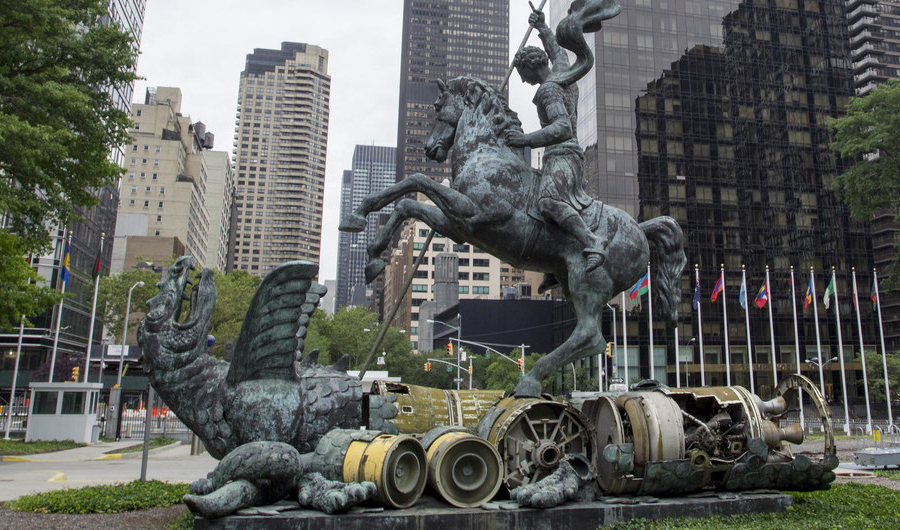 Twenty-five years ago, the world came together to extend and strengthen the bedrock agreement to reduce nuclear dangers: the nuclear Nonproliferation Treaty (NPT). Now, tensions among the world’s nuclear-armed states are rising; the risk of nuclear use is growing; hundreds of billions of dollars are being spent to replace and upgrade the already bloated arsenals of the world’s nine possessors of nuclear weapons; and key agreements that have kept nuclear competition in check are in serious jeopardy.
Twenty-five years ago, the world came together to extend and strengthen the bedrock agreement to reduce nuclear dangers: the nuclear Nonproliferation Treaty (NPT). Now, tensions among the world’s nuclear-armed states are rising; the risk of nuclear use is growing; hundreds of billions of dollars are being spent to replace and upgrade the already bloated arsenals of the world’s nine possessors of nuclear weapons; and key agreements that have kept nuclear competition in check are in serious jeopardy.





 Religious actors bring three “I’s” to international affairs: institutions, ideas, and imagination.
Religious actors bring three “I’s” to international affairs: institutions, ideas, and imagination. Catholic ideas and imagination have always rested on the concept of a positive, just peace based on right relationships rather than a negative peace based on violence and threat of violence. The tradition of a just war tells us that positive peace is the goal and tells us how to limit war, protecting civilians and the environment from indiscriminate and disproportionate attacks. The tradition of a just peace builds on that, offering moral and practical guidance on how to build a positive peace by expanding participation, strengthening right relationships, restoring persons and economies to build social cohesion, expanding reconciliation through truth telling and acknowledgement about the conflict, and other means to heal the wounds of war, in order to create a peace that is sustainable over time and the planet. Catholic theology and practice on a just peace has been expanding in recent decades, drawing from peacebuilding work of Jesus and building on the lessons the church has learned in peacebuilding around the world, from Northern Ireland to the Philippines. The church’s work on nuclear disarmament is animated by this vocation to build a more just and sustainable peace.
Catholic ideas and imagination have always rested on the concept of a positive, just peace based on right relationships rather than a negative peace based on violence and threat of violence. The tradition of a just war tells us that positive peace is the goal and tells us how to limit war, protecting civilians and the environment from indiscriminate and disproportionate attacks. The tradition of a just peace builds on that, offering moral and practical guidance on how to build a positive peace by expanding participation, strengthening right relationships, restoring persons and economies to build social cohesion, expanding reconciliation through truth telling and acknowledgement about the conflict, and other means to heal the wounds of war, in order to create a peace that is sustainable over time and the planet. Catholic theology and practice on a just peace has been expanding in recent decades, drawing from peacebuilding work of Jesus and building on the lessons the church has learned in peacebuilding around the world, from Northern Ireland to the Philippines. The church’s work on nuclear disarmament is animated by this vocation to build a more just and sustainable peace.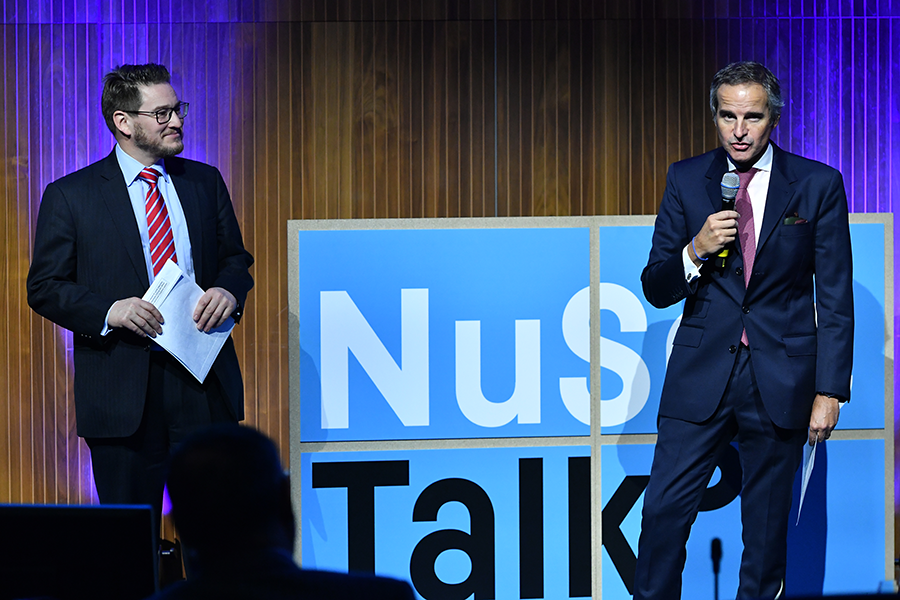 As the world’s biggest conferences on nuclear security, the ICONS meetings offer an opportunity for policymakers and practitioners to review global nuclear security efforts, share best practices, and raise awareness about new technologies and challenges. Global leaders gather during the ministerial segment, issuing a declaration that will guide future IAEA work in the nuclear security space. In the technical segment of the conference, experts from around the world share experiences through presentations, side events, and informal networking opportunities. For nuclear security wonks, the ICONS conference is the place to see and be seen. Now that the 2020 conference is over, it is important to reflect on what was decided, what was said, and what was learned and to look forward to what comes next.
As the world’s biggest conferences on nuclear security, the ICONS meetings offer an opportunity for policymakers and practitioners to review global nuclear security efforts, share best practices, and raise awareness about new technologies and challenges. Global leaders gather during the ministerial segment, issuing a declaration that will guide future IAEA work in the nuclear security space. In the technical segment of the conference, experts from around the world share experiences through presentations, side events, and informal networking opportunities. For nuclear security wonks, the ICONS conference is the place to see and be seen. Now that the 2020 conference is over, it is important to reflect on what was decided, what was said, and what was learned and to look forward to what comes next.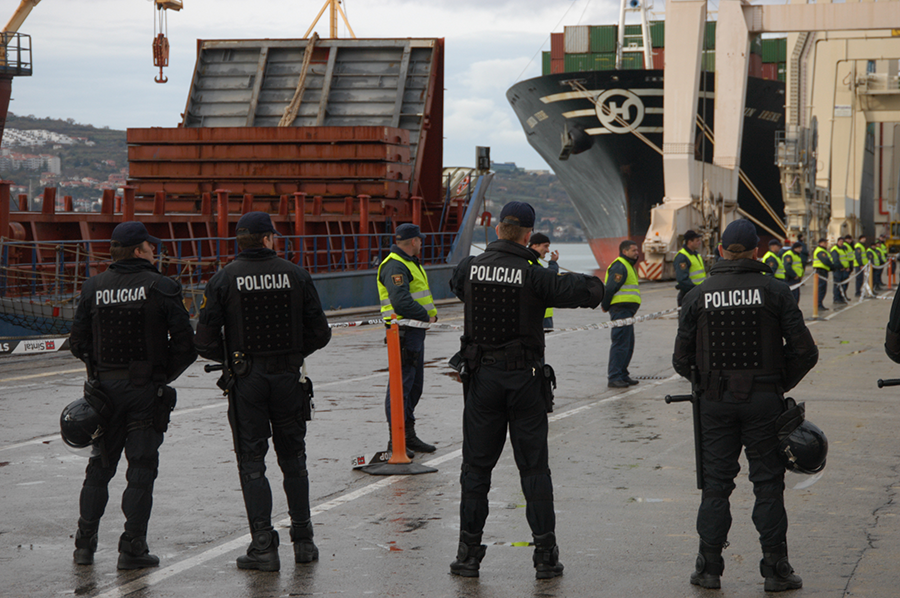 As the ministerial statement finished on the second day, the meeting’s 2,000 participants began to share information and best practices on day two. More than 50 technical sessions covered topics from legal frameworks to detection architecture to emerging technologies. These presentations allowed experts and government officials to share experiences, strengthening the international nuclear security regime through information exchanges. One unique aspect of ICONS is its assembly of experts from vastly different areas and communities into one conference. Participants could go from a session on reactor conversions and technical discussions about fuel specifications to brainstorming ways to improve education and information sharing through Nuclear Security Support Centers. Block chain was discussed alongside biometrics and alternative technologies for radioactive sources. Physical protection and border patrol experts rubbed shoulders with cybersecurity gurus, as people moved in and out of conference rooms, following the ebb and flow of presentations and coffee breaks.
As the ministerial statement finished on the second day, the meeting’s 2,000 participants began to share information and best practices on day two. More than 50 technical sessions covered topics from legal frameworks to detection architecture to emerging technologies. These presentations allowed experts and government officials to share experiences, strengthening the international nuclear security regime through information exchanges. One unique aspect of ICONS is its assembly of experts from vastly different areas and communities into one conference. Participants could go from a session on reactor conversions and technical discussions about fuel specifications to brainstorming ways to improve education and information sharing through Nuclear Security Support Centers. Block chain was discussed alongside biometrics and alternative technologies for radioactive sources. Physical protection and border patrol experts rubbed shoulders with cybersecurity gurus, as people moved in and out of conference rooms, following the ebb and flow of presentations and coffee breaks. Policymakers should increase engagement with industry representatives. Some industry representatives participated as exhibitors, but very few presented in the technical programs. Although nuclear security is the responsibility of states, nuclear operators and industry participants are responsible for implementing security. Incorporating industry participants into nuclear security policy discussions will be essential to strengthening nuclear security in the coming years, as well as to providing valuable ground truth for concepts developed in conference centers and meeting rooms.
Policymakers should increase engagement with industry representatives. Some industry representatives participated as exhibitors, but very few presented in the technical programs. Although nuclear security is the responsibility of states, nuclear operators and industry participants are responsible for implementing security. Incorporating industry participants into nuclear security policy discussions will be essential to strengthening nuclear security in the coming years, as well as to providing valuable ground truth for concepts developed in conference centers and meeting rooms.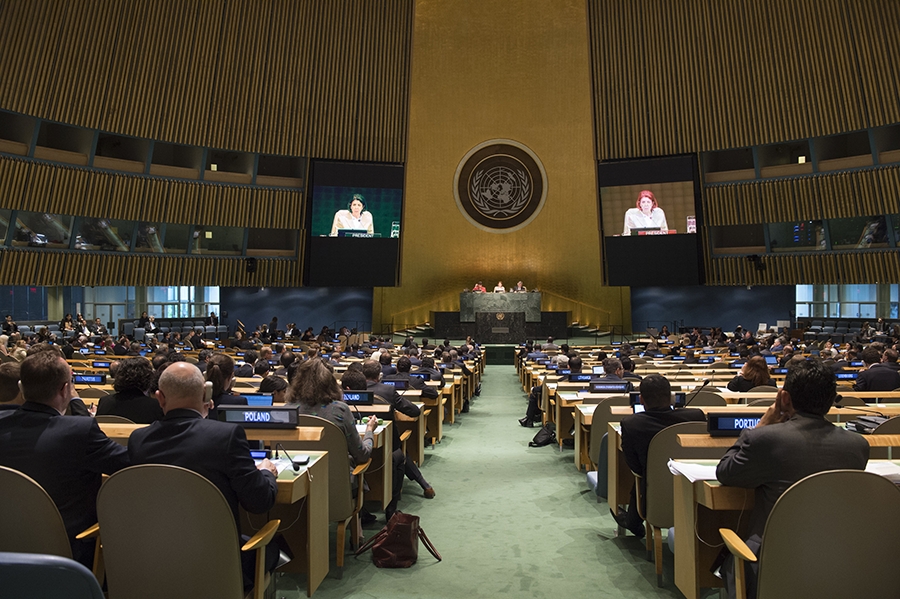 As the U.S. delegation entered the 2015 review conference, it anticipated the likelihood that the Middle Eastern zone issue would be the crucial subject for the final days of negotiations. The delegation believed that, despite lack of progress in arms control since conclusion of the 2010 New Strategic Arms Reduction Treaty (New START), the review conference could succeed in producing a consensus final document that would strengthen the NPT, provide impetus to the process of regular meetings of the five permanent members of UN Security Council, and, ideally, rejuvenate U.S.-Russian discussion of security issues.
As the U.S. delegation entered the 2015 review conference, it anticipated the likelihood that the Middle Eastern zone issue would be the crucial subject for the final days of negotiations. The delegation believed that, despite lack of progress in arms control since conclusion of the 2010 New Strategic Arms Reduction Treaty (New START), the review conference could succeed in producing a consensus final document that would strengthen the NPT, provide impetus to the process of regular meetings of the five permanent members of UN Security Council, and, ideally, rejuvenate U.S.-Russian discussion of security issues.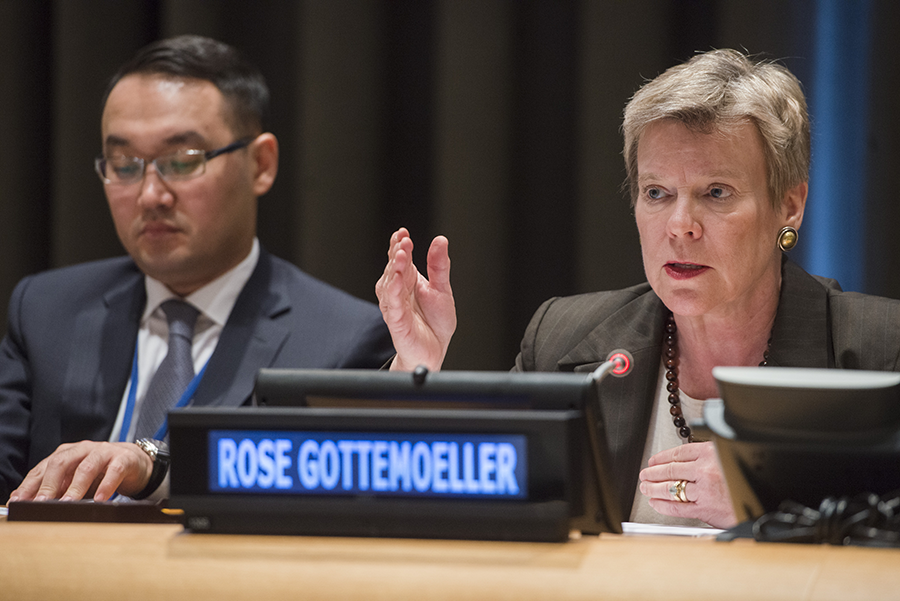 In anticipation of the need to compromise with Egypt, the White House recalled how negatively Israeli Prime Minister Benjamin Netanyahu had reacted to the Egyptian-U.S. compromise at the end of the 2010 review conference, despite the U.S. delegation having kept Israeli officials closely informed of that negotiation. The White House decided, as the review conference entered its final week in May, to dispatch me to Jerusalem to ensure that the Israeli government could not claim again to be surprised and, if necessary, for me to receive directly Israeli criticism of the eventual compromise. Notably, in May 2015, conclusion of nuclear negotiations with Iran, which were successfully reached just two months later, was a far higher priority than the review conference for U.S. leadership.
In anticipation of the need to compromise with Egypt, the White House recalled how negatively Israeli Prime Minister Benjamin Netanyahu had reacted to the Egyptian-U.S. compromise at the end of the 2010 review conference, despite the U.S. delegation having kept Israeli officials closely informed of that negotiation. The White House decided, as the review conference entered its final week in May, to dispatch me to Jerusalem to ensure that the Israeli government could not claim again to be surprised and, if necessary, for me to receive directly Israeli criticism of the eventual compromise. Notably, in May 2015, conclusion of nuclear negotiations with Iran, which were successfully reached just two months later, was a far higher priority than the review conference for U.S. leadership.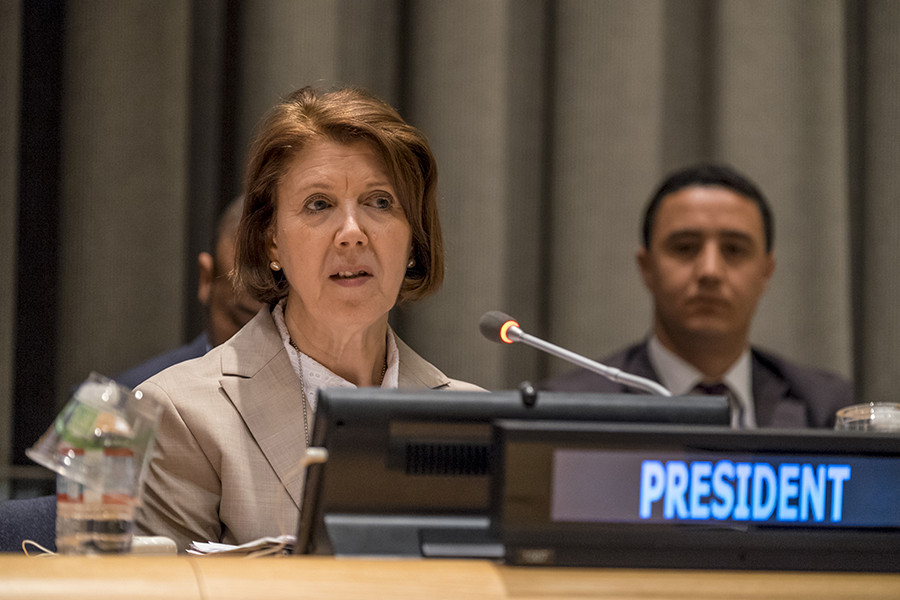 Feroukhi ended the meeting shortly before 1:00 a.m. and asked that all sides be ready to resume talking later that morning. The U.S. delegation was therefore more than surprised when Feroukhi issued a “final draft text” just an hour later. Moreover, this text removed all the small compromises on secondary issues agreed by the United States and Egypt and simply reverted to the original Egyptian text, which could not be interpreted as a sign of good faith.
Feroukhi ended the meeting shortly before 1:00 a.m. and asked that all sides be ready to resume talking later that morning. The U.S. delegation was therefore more than surprised when Feroukhi issued a “final draft text” just an hour later. Moreover, this text removed all the small compromises on secondary issues agreed by the United States and Egypt and simply reverted to the original Egyptian text, which could not be interpreted as a sign of good faith. The 1995 NPT Review and Extension Conference also had another formal purpose. Article X of the NPT called for a conference of states-parties to be held 25 years after the treaty’s entry into force in order “to decide whether the [t]reaty shall continue in force indefinitely, or shall be extended for an additional fixed period or periods.”
The 1995 NPT Review and Extension Conference also had another formal purpose. Article X of the NPT called for a conference of states-parties to be held 25 years after the treaty’s entry into force in order “to decide whether the [t]reaty shall continue in force indefinitely, or shall be extended for an additional fixed period or periods.”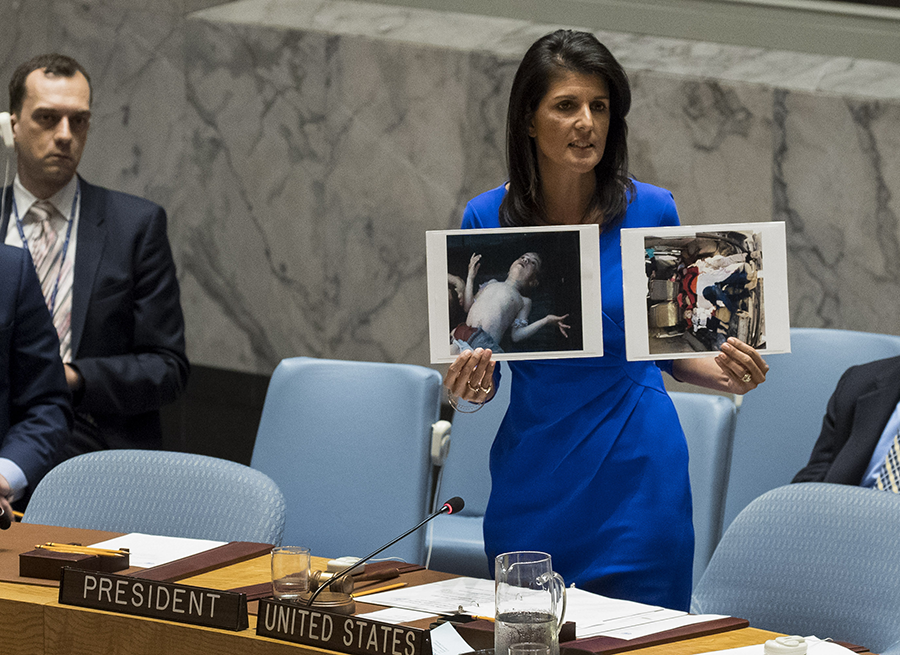 The OPCW Investigation and Identification Team began its work in June 2019 with a mandate to attribute responsibility for chemical weapons use in Syria, which has continued throughout the Syrian civil war and despite the destruction of the vast bulk of Syria’s declared chemical weapons stockpile following its accession to the Chemical Weapons Convention (CWC) in 2013.
The OPCW Investigation and Identification Team began its work in June 2019 with a mandate to attribute responsibility for chemical weapons use in Syria, which has continued throughout the Syrian civil war and despite the destruction of the vast bulk of Syria’s declared chemical weapons stockpile following its accession to the Chemical Weapons Convention (CWC) in 2013.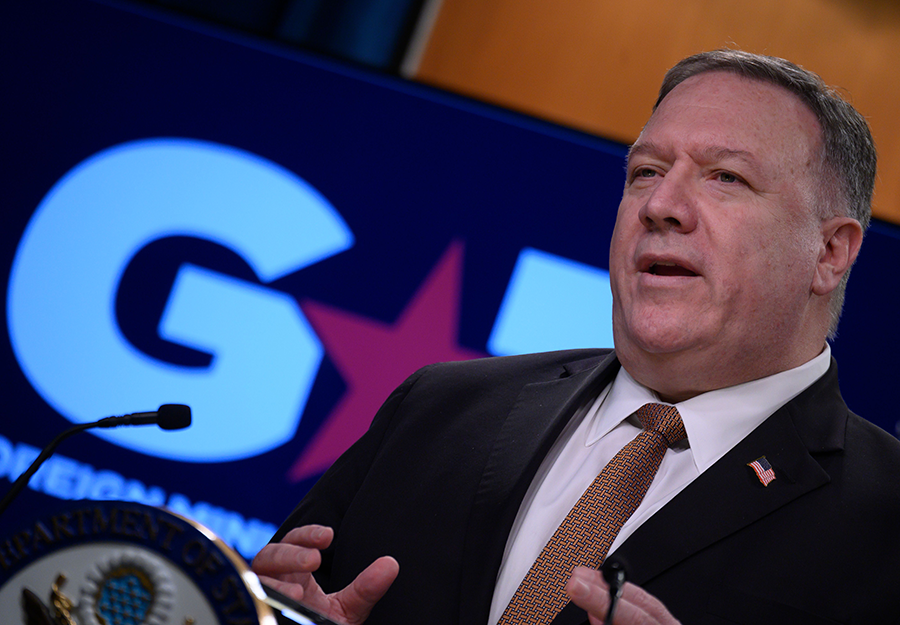 Secretary of State Mike Pompeo and Defense Secretary Mark Esper have decided to move forward with a U.S. withdrawal from the treaty, the Guardian reported on April 5. The report indicated that a statement of intent would be forthcoming soon, with an official notification to withdraw coming likely by the end of September. Per the treaty text, the U.S. decision would take effect six months after the official notice.
Secretary of State Mike Pompeo and Defense Secretary Mark Esper have decided to move forward with a U.S. withdrawal from the treaty, the Guardian reported on April 5. The report indicated that a statement of intent would be forthcoming soon, with an official notification to withdraw coming likely by the end of September. Per the treaty text, the U.S. decision would take effect six months after the official notice.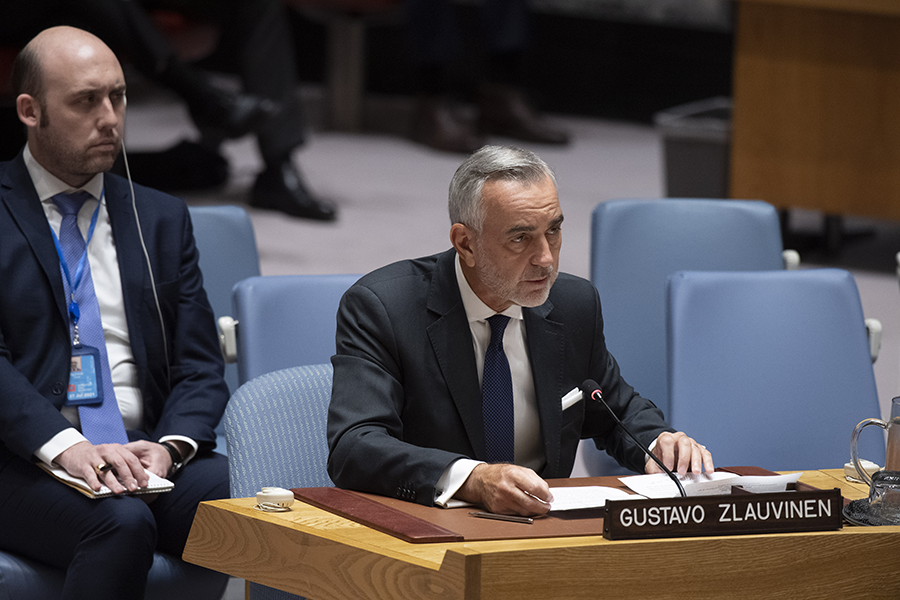 One of the largest conferences that has been postponed is the 10th review conference of the nuclear Nonproliferation Treaty (NPT), which will now take place no later than April 2021. (See
One of the largest conferences that has been postponed is the 10th review conference of the nuclear Nonproliferation Treaty (NPT), which will now take place no later than April 2021. (See 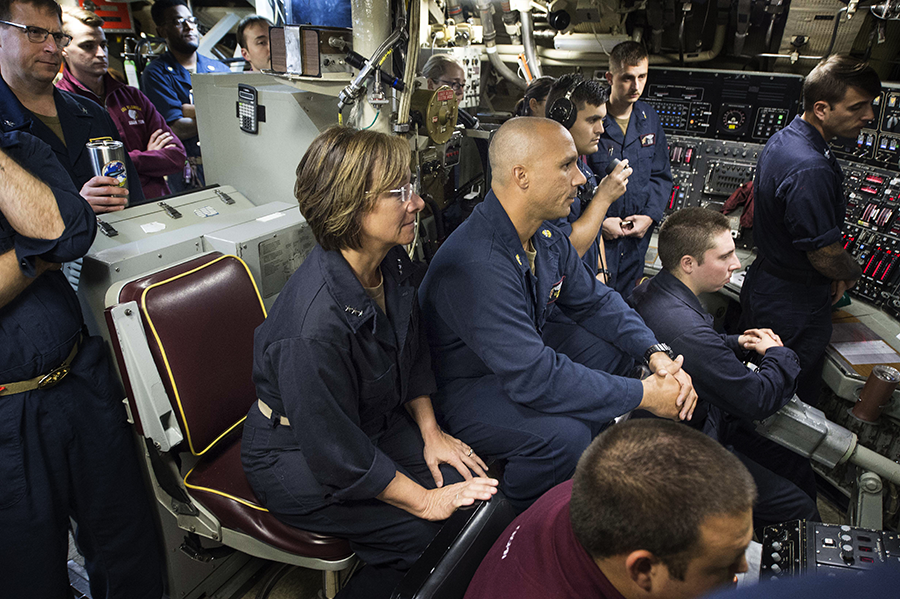 Department officials have expressed confidence that these steps have helped to ensure that the virus does not compromise the ability of the nuclear arsenal to perform its intended mission.
Department officials have expressed confidence that these steps have helped to ensure that the virus does not compromise the ability of the nuclear arsenal to perform its intended mission.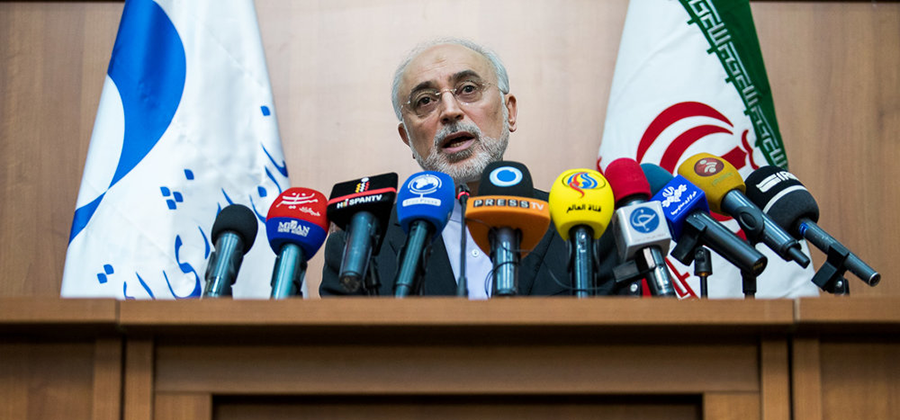 In a March 27 announcement, the Atomic Energy Organization of Iran (AEOI) said that a new generation of centrifuge machines will be unveiled at the Natanz enrichment facility “in the near future.”
In a March 27 announcement, the Atomic Energy Organization of Iran (AEOI) said that a new generation of centrifuge machines will be unveiled at the Natanz enrichment facility “in the near future.”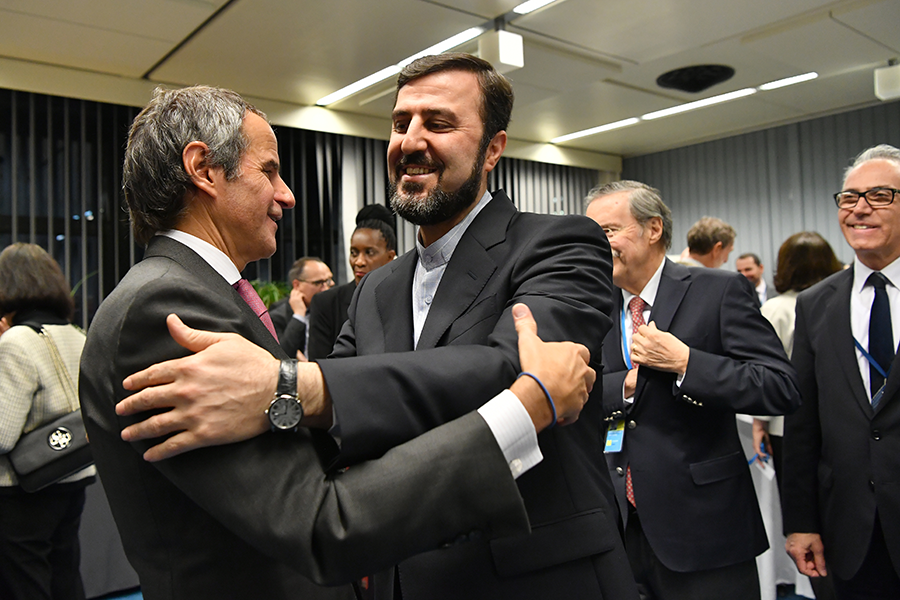 As of mid-April, Iran had confirmed more than 75,000 cases of COVID-19, according to the Johns Hopkins Coronavirus Resource Center. Despite limitations on travel, Kazem Gharibabadi, Iran’s ambassador to the International Atomic Energy Agency (IAEA), said on March 20 that “there are no limitations” for inspectors traveling to Iran and throughout the country monitoring the nuclear program.
As of mid-April, Iran had confirmed more than 75,000 cases of COVID-19, according to the Johns Hopkins Coronavirus Resource Center. Despite limitations on travel, Kazem Gharibabadi, Iran’s ambassador to the International Atomic Energy Agency (IAEA), said on March 20 that “there are no limitations” for inspectors traveling to Iran and throughout the country monitoring the nuclear program.